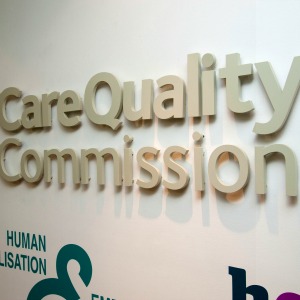When will the new inspections begin?
The CQC is inspecting practices as part of its new look regime. It will begin handing out ratings this month.
Who will this affect?
The CQC is going to inspect all providers of general practice, including out-of-hours providers, by April 2016. It has picked 12 CCG areas to go first (Brighton and Hove, North East Essex, Cumbria, Enfield, Tameside and Glossop, Lincolnshire West, West Kent, West Cheshire, Merton, West London, South Warwickshire and Dorset) and it aims to inspect 25% of the practices and providers in each CCG in six-month blocks.
Practices that were inspected before October will have to be inspected again before April 2016, regardless of how the inspection went.
What’s changed from the previous regime?
Most significantly a GP, a specialist inspector and a nurse or practice manager will be part of every inspection. GP trainees and patients may also attend some inspections.
GPs will also be given ratings – modelled on those given to schools by Ofsted – in 42 different areas, and based on 11 fundamental standards. The CQC will determine practices’ ratings across six patient groups, five key questions and combinations of each. These will feed into the practice’s overall rating, which can be ‘outstanding’, ‘good’, ‘needs improvement’, or ‘inadequate’. Practices will be required to display their rating in the waiting rooms and the CQC will send a letter to the local area team with the results.
Other new elements include:
- Inspectors sitting in on consultations, the CQC told Pulse this wouldn’t be for every inspection, but that their inspectors ‘reserved the right’ to observe consultations with patient consent.
- Collecting evidence, this will be ongoing, but ‘information gathering’ (handbook page 10) will take place before inspections – including patient, area team and CCG feedback – and during, where they will interview staff and review the practices.
- ‘More rigour’, the GPC’s contracts and regulations lead, Dr Robert Morley, told delegates at a Pulse Live event that the new inspections would be ‘more rigorous’. He added that the whole process would be more stressful and time consuming.
- Two weeks’ notice, an extension on the two days for previous inspections, but the CQC reserves the right to make unannounced spot-checks where concerns have been raised.
What will happen after the inspections?
Where no regulations were breached but inspectors think improvements need to be made they will make recommendations, or issue enforcement actions.
Practices that are found to be inadequate in a number of areas will be put in ‘special measures’ unless they improve within six months. This will allow the CQC, in partnership with NHS England, to set out clear expectations for improvement, including a timescale to sort out problems.
If there is still no improvement with a further six months, the practices will have their registrations removed.
Will GP practices get support if they are put it ‘special measures’?
They will get standard support from local area teams, who will devise a plan for practices.
However, the RCGP has worked with NHS England to devise a 12-month pilot support programme offered to practices that enter special measures after being given a rating of ‘inadequate’ in some areas by the CQC’s new inspection regime – and is designed to prevent them from having their registration removed. The pilot will run from October 2014 to October 2015.
But practices that choose to apply for the support programme will have to pay half the costs which will be up to £5,000 to access the essential support – and NHS England will pay the other half.
What will happen when practices are given their ratings?
The CQC will publish the overall rating of a practice on its website – grading it either ‘outstanding’, ‘good’, ‘needs improvement’, or ‘inadequate’. However, under new proposals announced by the Department of Health, GP practices that fail to display their CQC ratings will be charged up to £600 from April 2015. The Department of Health has proposed that it should be a legal requirement for practices to clearly display their CQC ratings.
It will be up to the providers’ discretion on how the rating should be displayed – and for the CQC to determine whether the steps taken by the practice have been sufficient.
Will the CQC need to access patient medical records during inspections?
As part of the new inspection regime, CQC inspectors have the power to access patient medical records without their consent to ‘assess the quality of care provided by the GP practice’. However, the GP practice will have the option to anonymise the patient records if it wants to.
What prescribing data will the CQC publish?
According Professor Steve Field, the CQC’s chief inspector of primary care, the CQC will be putting detailed data on prescribing and other measures in the public domain ‘very soon’. This will be part of a range of practice performance measures – which also includes retired QOF indicators – that the CQC is going to publish for the purposes of ‘intelligence monitoring’ to inform ongoing inspections.

















